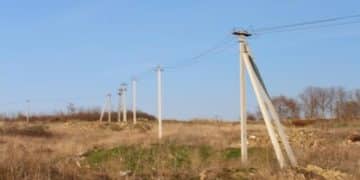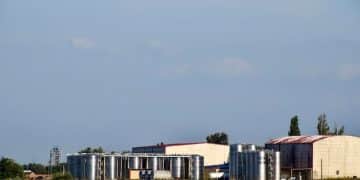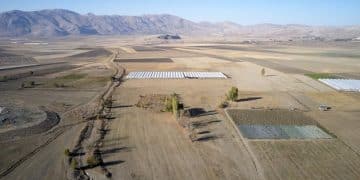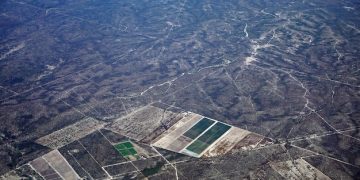Analyzing the Effectiveness of Clean Energy R&D Grants: A 5-Year US Review
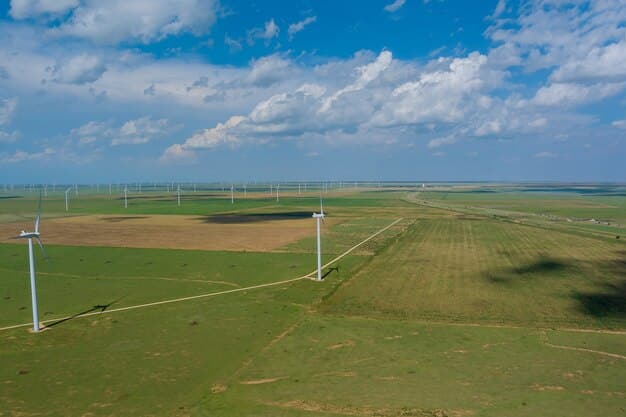
Analyzing the Effectiveness of Federal Grant Programs for Clean Energy Research and Development: A 5-Year Review assesses the impact and efficacy of federal investments in clean energy innovation, providing insights into program performance and areas for improvement in the US context.
Federal grant programs are pivotal in fostering clean energy research and development across the United States. This article provides analyzing the effectiveness of federal grant programs for clean energy research and development: a 5-year review, offering insights into their impact and future direction.
Understanding the Landscape of Clean Energy Funding
Clean energy funding is essential for driving innovation and reducing reliance on fossil fuels. Federal grant programs play a vital role in supporting projects that advance renewable energy technologies and sustainable practices.
Key Federal Grant Programs for Clean Energy
Several federal agencies administer grant programs aimed at clean energy research and development. These programs often target specific technologies, stages of development, or geographic regions.
- The Department of Energy (DOE) offers grants through its various offices, including the Office of Energy Efficiency and Renewable Energy (EERE).
- The Environmental Protection Agency (EPA) provides grants for projects focused on environmental protection and clean energy initiatives.
- The National Science Foundation (NSF) supports basic research in science and engineering, some of which is relevant to clean energy.
These grant programs not only fund research but also facilitate collaboration between universities, private companies, and government agencies, accelerating the pace of innovation.
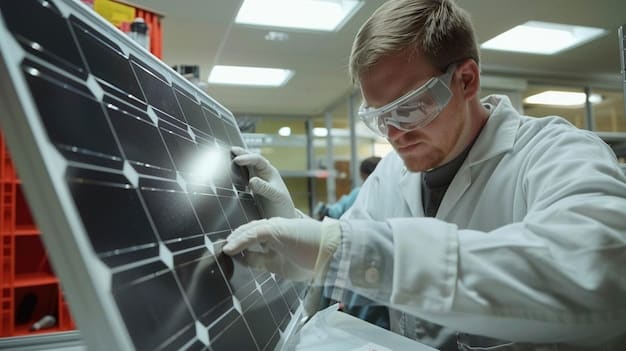
Challenges in Clean Energy Funding
Despite the importance of clean energy funding, several challenges can hinder its effectiveness. These challenges include insufficient funding levels, bureaucratic hurdles, and a lack of coordination among different funding agencies.
Additionally, the political landscape can significantly impact the availability and direction of clean energy funding. Changes in administration or legislative priorities can lead to shifts in funding priorities and program objectives.
In conclusion, understanding the landscape of clean energy funding involves recognizing the key players, the types of programs available, and the challenges that must be addressed to maximize the impact of federal investments in this critical area.
Evaluating the Impact of Grant Programs: A 5-Year Overview
Evaluating the impact of grant programs requires a comprehensive approach that considers both short-term outputs and long-term outcomes. A 5-year overview provides a sufficient timeframe to assess the effectiveness of these programs.
Metrics for Assessing Program Success
Several metrics can be used to assess the success of federal grant programs for clean energy research and development. These metrics include:
- The number of patents and publications generated by funded projects.
- The amount of private investment leveraged by federal grants.
- The reduction in greenhouse gas emissions resulting from the adoption of clean energy technologies.
- The creation of new jobs in the clean energy sector.
By tracking these metrics over time, policymakers can gain insights into the return on investment of federal grant programs and identify areas for improvement.
Case Studies of Successful Grant Programs
Several federal grant programs have demonstrated significant success in advancing clean energy technologies. For example, the DOE’s SunShot Initiative, aimed at reducing the cost of solar energy, has achieved impressive results in a relatively short period.
Similarly, the EPA’s Clean Diesel Program has helped to reduce emissions from diesel engines, improving air quality and public health. These case studies highlight the potential of federal grant programs to drive innovation and address pressing environmental challenges.
In the past 5 years, federal programs incentivizing solar panel installment or home energy efficiency upgrades have also seen higher adoption rates across the US, contributing significantly to lowering household carbon footprints.
In conclusion, a 5-year overview of federal grant programs reveals both successes and challenges in advancing clean energy technologies. By using appropriate metrics and learning from successful case studies, policymakers can improve the effectiveness of these programs and accelerate the transition to a clean energy economy.
Analyzing Technological Advancements and Innovations
Federal grant programs have played a crucial role in driving technological advancements and innovations in the clean energy sector by funding research in new materials, prototype technologies, and improvements to existing systems.
Breakthroughs in Renewable Energy Technologies
Federal funding has supported breakthroughs in various renewable energy technologies, including solar, wind, and geothermal. These advancements have led to more efficient and cost-effective energy generation.

For example, recent advances in next-generation solar cells, such as perovskite solar cells, have the potential to significantly increase the efficiency of solar energy conversion. Similarly, innovations in wind turbine design have led to taller, more powerful turbines that can capture more wind energy.
In geothermal energy, enhanced geothermal systems (EGS) technologies are being developed to access geothermal resources in areas that were previously considered unsuitable for geothermal energy production.
Impact of Funding on Energy Storage Solutions
Energy storage is a critical component of a clean energy system, as it allows for the storage of intermittent renewable energy for later use. Federal grant programs have supported research and development of various energy storage solutions, including batteries, flywheels, and pumped hydro storage.
These advancements have led to more efficient and cost-effective energy storage solutions, making it easier to integrate renewable energy into the grid. Advances in lithium-ion battery technology, for example, have significantly reduced the cost of electric vehicles and grid-scale energy storage.
To summarize, federal grant programs have been instrumental in driving technological advancements and innovations in the clean energy sector. These advancements have the potential to transform the energy system and reduce greenhouse gas emissions, paving the way for a more sustainable future.
Economic Impacts: Job Creation and Industry Growth
The clean energy sector has experienced significant growth in recent years, driven in part by federal grant programs. This growth has had significant economic impacts, including job creation and industry development.
Job Creation in the Clean Energy Sector
Federal grant programs have supported the creation of new jobs in the clean energy sector, including jobs in manufacturing, installation, and maintenance of renewable energy technologies. These jobs often pay well and provide opportunities for career advancement.
According to the U.S. Department of Energy, the clean energy sector employs millions of Americans and is one of the fastest-growing sectors of the economy. Federal grant programs have helped to stimulate this growth by providing funding for research, development, and deployment of clean energy technologies.
Furthermore, clean energy job creation extends beyond traditional engineering roles towards sales, marketing, project management, data analytics, and other industries that support or utilize clean technologies, broadening the economic impact.
Industry Growth and Competitiveness
Federal grant programs have also helped to foster industry growth and competitiveness by supporting the development of new technologies and businesses. These programs have enabled U.S. companies to compete in the global clean energy market and create new export opportunities.
For example, the DOE’s Advanced Research Projects Agency-Energy (ARPA-E) program has supported the development of innovative technologies that have the potential to transform the energy system. Many of these technologies have been commercialized by U.S. companies, creating new jobs and economic opportunities.
In short, federal grant programs have had significant economic impacts by supporting job creation and industry growth in the clean energy sector. These impacts are likely to continue in the coming years as the clean energy sector continues to grow and develop.
Policy Implications and Future Recommendations
The findings from this 5-year review have several important policy implications for federal grant programs. By understanding the strengths and weaknesses of these programs, policymakers can make informed decisions about future funding priorities and program design.
Strengthening Program Evaluation and Accountability
One of the most important policy implications in strengthening program evaluation and accountability. Policymakers should develop clear metrics for assessing the success of federal grant programs and ensure that these programs are regularly evaluated.
- The need for streamlined application processes to reduce administrative burdens on applicants.
- The importance of providing technical assistance to grantees to help them manage their projects effectively.
- The value of fostering collaboration and knowledge sharing among grantees.
By implementing these recommendations, policymakers can improve the effectiveness of federal grant programs and ensure that they are achieving their intended goals.
Enhancing Collaboration and Coordination
Another important policy implication is enhancing collaboration and coordination among different funding agencies. Federal grant programs are often administered by different agencies with different objectives and priorities. This can lead to duplication of effort and a lack of coordination.
To address this challenge, policymakers should establish mechanisms for coordinating funding decisions and sharing information among different agencies. This could involve creating a joint task force or establishing a common database of funded projects.
In general, policy implications and prospective recommendations from this review offer a pathway for federal grant programs to continue driving innovation, economic growth, and environmental sustainability in the clean energy sector.
Addressing Challenges and Maximizing Program Effectiveness
Despite the successes of federal grant programs in advancing clean energy technologies, several challenges remain. By addressing these challenges, policymakers can maximize the effectiveness of these programs and accelerate the transition to a clean energy economy.
Overcoming Bureaucratic Hurdles
One of the main challenges is overcoming bureaucratic hurdles that can slow down the process of awarding grants and managing projects. These hurdles can include complex application processes, lengthy review times, and cumbersome reporting requirements.
To address this challenge, policymakers should streamline the grant-making process and reduce administrative burdens on applicants. This could involve simplifying application forms, shortening review times, and implementing electronic reporting systems.
In general, addressing challenges and amplifying program effectiveness is essential for federal grant programs to achieve their full potential in driving clean energy innovation and addressing climate change.
Supporting Early-Stage Technologies
Another challenge is supporting early-stage technologies that have the potential to transform the energy system. These technologies often face significant barriers to commercialization due to the high cost of development and the uncertainty of market demand.
To address this challenge, policymakers should provide dedicated funding for early-stage technologies and create incentives for private investment in these technologies. This could involve establishing a venture capital fund or providing tax credits for companies that invest in clean energy startups.
In conclusion, addressing challenges and maximizing program effectiveness requires a multipronged approach that focuses on streamlining bureaucratic processes, supporting early-stage technologies, and fostering collaboration among different stakeholders.
| Key Point | Brief Description |
|---|---|
| 💡 Funding Impact | Federal grants stimulate clean energy R&D, helping develop new technologies. |
| 📈 Economic Growth | Clean energy advancements boost job creation and industry competitiveness. |
| 🌍 Climate Goals | Innovations driven by grants contribute to reducing greenhouse gas emissions. |
| ✅ Program Improvement | Evaluating and streamlining grant programs enhances their overall effectiveness. |
[Frequently Asked Questions]
▼
The main goal is to stimulate research and development in clean energy technologies, fostering innovation and reducing reliance on fossil fuels.
▼
Key agencies include the Department of Energy (DOE), the Environmental Protection Agency (EPA), and the National Science Foundation (NSF).
▼
Effectiveness is often gauged by metrics such as patents generated, private investment leveraged, and reductions in greenhouse gas emissions.
▼
Challenges include bureaucratic hurdles, insufficient funding, and the need for better coordination among various funding agencies.
▼
Streamlining application processes, enhancing collaboration, and providing dedicated support for early-stage technologies are key improvements.
Conclusion
Analyzing the effectiveness of federal grant programs for clean energy research and development over the past five years reveals a mixed landscape of successes and challenges. While these programs have driven significant technological advancements, job creation, and industry growth, overcoming bureaucratic hurdles and improving program coordination are crucial for maximizing their impact in achieving a sustainable energy future in the US.
